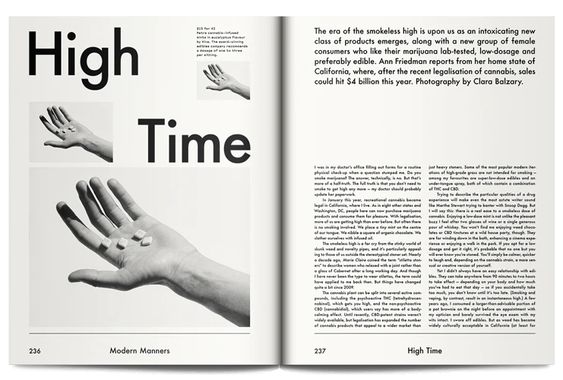Choose an image you find attractive, well-executed, or related to your academic and professional interests, and analyze it according to the Kostelnik readings.
“Whenever an image is taken from one perceptual context and placed in another, our perception of it changes… If we transport a typeface, icon, or other visual element from one document to another, its new perceptual context transforms it” (Kostelnik, 53).
How does this spread demonstrate Kostelnik’s description of the perceptual principle?

Objectively speaking, the image displayed in this spread depicts an outstretched hand holding four square tablets. Without context, one might percieve these tablets as chewing gum, folded paper, snack crackers, or even tiny tiles, perhaps from some sort of game or puzzle. It is the bold typeface, reading “High Time,” that contextualizes said tablets as pills, most likely being abused by their user.
Kostelnik’s description of the perceptual principle is captured in these pages, demonstrating how an image by itself can convey anything we want it to. It is the context we place it in which determines our perception of its meaning.